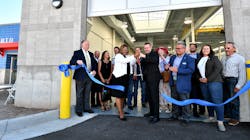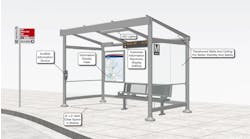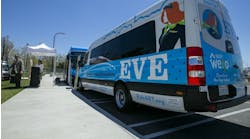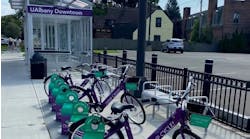The North Central Regional Transit District (NCRTD) hosted a ribbon cutting on Sept. 15, to dedicate its new $11 million maintenance facility, wash bay and fueling station and celebrate the culmination of a nine-year endeavor in achieving the significant milestone.
The completion of the facility was made possible by the funding and support of Federal Transit Administration (FTA) federal grant programs and New Mexico state legislative capital investment programs. The FTA provided more than $8 million in federal funds towards the completion of the project.
Joining the district to celebrate the opening was FTA Senior Advisor Veronica McBeth who traveled from Washington, D.C. McBeth manages several FTA initiatives, including transit-oriented development, climate and sustainability, equity and infrastructure. The senior advisor was joined by Region VI FTA Administrator Gail Lyssy and her staff.
A number of speakers joined McBeth, NCRTD Chair and City of Española Councilor Dennis Tim Salazar and NCRTD Executive Director Anthony Mortillaro in cutting the ribbon, including New Mexico Sen. Leo Jaramillo, NMDOT Director of Transit and Rail David Harris, representatives for Gov. Michelle Lujan Grisham, Sen. Ben Ray Lujan and Rep. Teresa Leger Fernandez. The group also featured many current and former NCRTD Board members. C. Michael Chavarria, chair of the Eight Northern Pueblos and governor of Santa Clara Pueblo, provided an opening prayer.
The new facility is located on seven acres and encompasses an overall total of 21,600-square feet of buildings. It consists of five maintenance bays, fleet and facilities administrative offices, parts and inventory space, a bus wash facility and fueling area. Green building standards were employed and allowed for energy efficient design, water recycling and conservation in the recapture of runoff water. It also allows increased quality and safety control, cost savings and more efficient responsiveness by reducing reliance on off-site vendors and providing us with direct oversight on vehicle repairs and routine maintenance.



